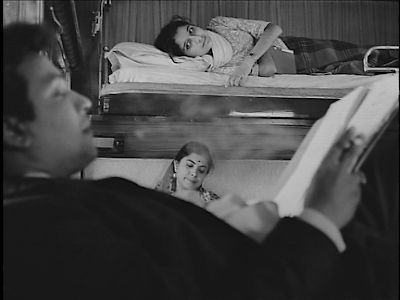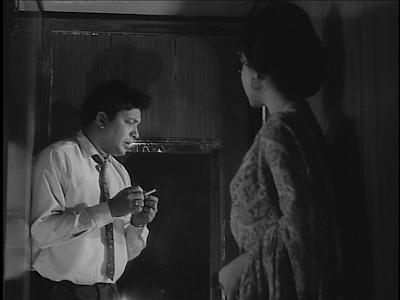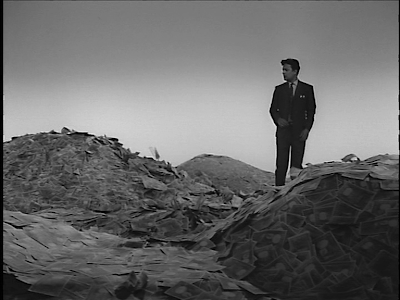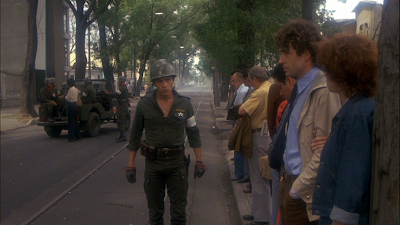BOUDU
- Boudu Saved from Drowning -
A film by Jean Renoir
Country: France
Year 1938
French with English subtitles
11th Dec 2011;5.45pm
Perks Mini Theater
Perks School
- Boudu Saved from Drowning -
A film by Jean Renoir
Country: France
Year 1938
French with English subtitles
11th Dec 2011;5.45pm
Perks Mini Theater
Perks School
Jean Renoir's effortless masterpiece is as informal, beguiling, and subversive as its eponymous hero, a tramp who is saved from suicide by a Parisian bookseller and ends up taking over his benefactor's home, wife, and mistress.
Michel Simon's Boudu is one of the great creations of the cinema: he's not a sentimental, Chaplinesque vagabond, but a smelly, loutish big-city bum; all he's got going for him is his unshakable faith in his perfect personal freedom.
 The bookseller thinks of himself as a free spirit and a dedicated humanitarian; he wants to be both Boudu's brother and his benefactor, but the tramp resists all of his approaches. He won't be trapped in any roles; like the water of the river from which he comes (and to which he returns), his only duty is to keep moving.
The bookseller thinks of himself as a free spirit and a dedicated humanitarian; he wants to be both Boudu's brother and his benefactor, but the tramp resists all of his approaches. He won't be trapped in any roles; like the water of the river from which he comes (and to which he returns), his only duty is to keep moving. Shot largely on location along the quays of Paris, the film features several early experiments with deep focus and nonnaturalistic sound, though its chief stylistic feature is Renoir's incomparable way of gently shifting moods, from the farcical to the lyrical to the tragic and back again.
Shot largely on location along the quays of Paris, the film features several early experiments with deep focus and nonnaturalistic sound, though its chief stylistic feature is Renoir's incomparable way of gently shifting moods, from the farcical to the lyrical to the tragic and back again.A quirky look at class struggle no less fearsome in its implications because of its playfulness, Boudu Saved From Drowning was originally a theatrical hit by by René Fauchois, but the redoubtable Jean Renoir makes it seem intended for the screen. This seamless production, astounding given the limited tools available to the crew at the time, still has much to teach filmmakers today.
For the casual viewer it's as pleasing to the eye as to the funny bone. Boudu himself, of course, isn't a pretty sight for anyone, but nonetheless he sets his sights on the women of the household, and his anarchic wit often proves the undoing of the bourgeois saviour keen to display him as a mark of his own success.

Jean Renoir
1894-1979
Son of the famous Impressionist painter Pierre Auguste, Jean Renoir had a happy childhood. Pierre Renoir was his brother, and Claude Renoir was his nephew. After the end of World War I, where he won the Croix de Guerre, he moved from scriptwriting to filmmaking. He married Catherine Hessling, for whom he began to make movies; he wanted to make a star of her. His next partner was Marguerite Renoir, whom he never married, although she took his name. He left France in 1941 during the German invasion of France during World War II and became a naturalized US citizen.1894-1979
As a director and actor, he made more than forty films from the silent era to the end of the 1960s. As an author, he wrote the definitive biography of his father, Renoir, My Father (1962). Renoir exerted immense influence on subsequent auteur directors, including among others Orson Welles, Satyajit Ray, and François Truffaut. Best remembered for such cinematic landmarks as Grand Illusion (1937) and The Rules of the Game (1939), Renoir is considered one of the major figures of French and international film history.
Renoir's films were underestimated when they first came out. They were unconventional, complex, and so energetic and technically daring that few noticed their intricate structure. They were often dismissed as rough, not fully achieved artistically. The generation that came to the cinema in the '60s and '70s (perhaps the richest and most diverse era in European cinema) recognised Renoir as an ancestor who had already made the kind of films they admired or were setting out to make themselves, and justly hailed them as masterpieces.











































